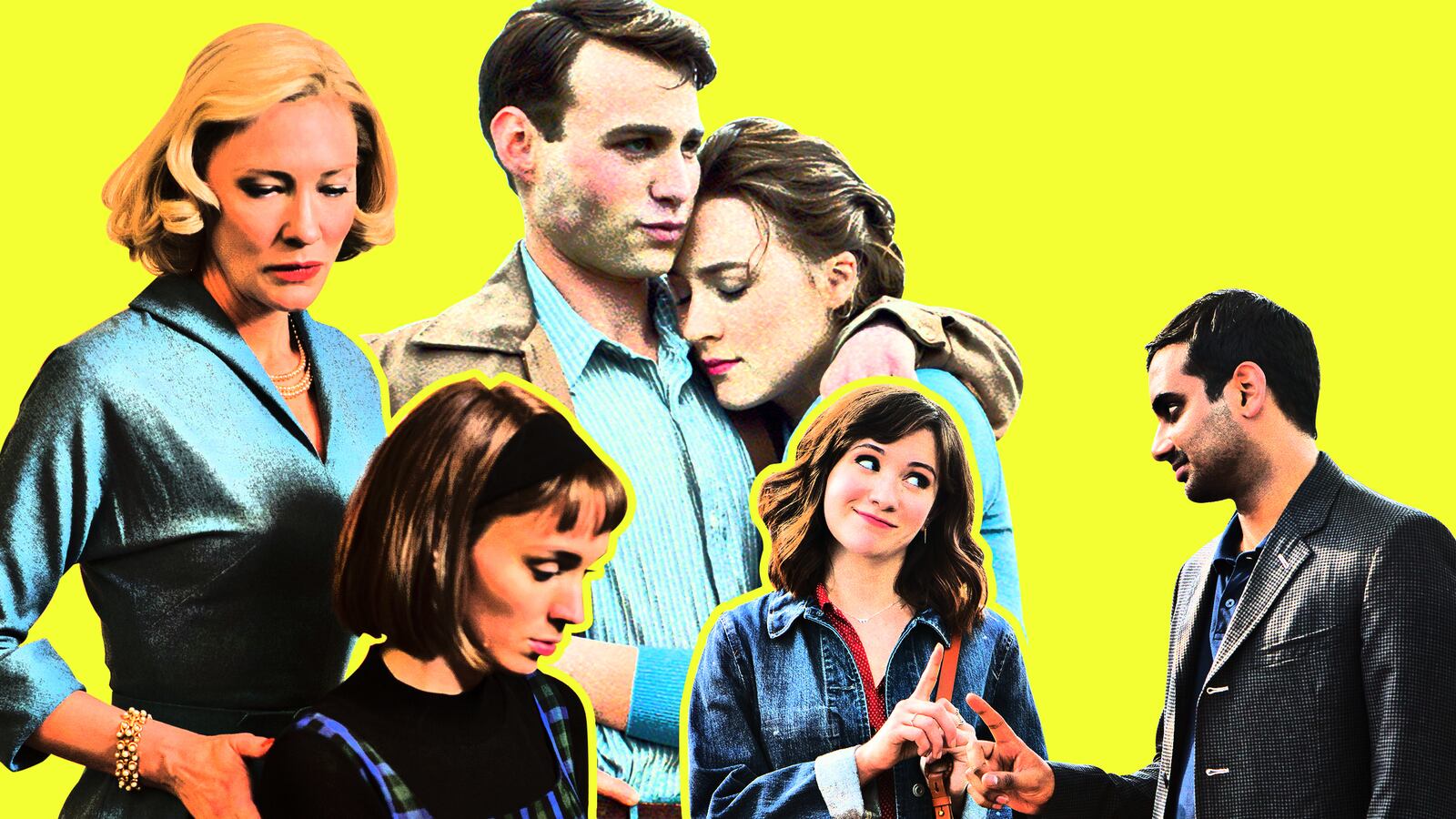For the movie fan who is comforted by constancy, the top of this year’s box office, which is its usual collection of superheroes, dinosaurs, franchises, and space, must be a source of boundless relief. But for anyone who’s been waiting for a change of pace in the almost lockstep march from superhero season to prestige drama season, it seems that this month an old dog has learnt some new tricks.
Maybe it’s just the calm between superhero storms, but for the first time in a long time, it feels like love is in the air.
To be fair, love is always in the air for Hollywood, and has been ever since Thomas Edison took it upon himself to film the first onscreen kiss in 1896. As cinema developed into a commercial medium, built around the combination of story and image, love presented the opportunity for both spectacle and structure; the pursuit of love is fertile ground for story, and the attainment of love is fertile ground for fantasy. But in accordance with the values of the era, the value of love at the movies waxes and wanes, and there’s no denying that the last decade has been a period of romantic decay.
Gone are the Gone With The Winds, the Titanics, the The Way We Weres—Hollywood used to be known as The Dream Factory, but in the last 10 years, the world’s dreams have been otherwise occupied. Love remains a convenient way to structure a story, and so movies continue to have love interests, but love itself remains elusive.

Maybe you can blame the financial crisis, maybe it was the boom of image-oriented social media, maybe it was the reemergence of long overdue conversations about gender and power, but love has not been a focus of cinematic art in quite some time. Here and there, a foreign film will break through—Rust and Bone and Blue Is The Warmest Color being two of the most prominent examples—but domestically romance is a topic that has been increasingly relegated to the domains of microbudget independent filmmaking at best, and anaesthetizing corporate shill at worst. For every Middle Of Nowhere or An Oversimplification Of Her Beauty that makes it to art house theaters with an attempt to probe the nature of human connections, there’s a Paper Towns waiting at the multiplex to sell you the Hallmark version.
So the state of this season has been a little puzzling, as lately it seems both the most discussed and the most artistically inquisitive projects to come out of Hollywood center themselves around that funny thing called love.
Where the traditionally safe bets like the corporate workplace dramas Steve Jobs and Our Brand Is Crisis have struggled to find their footing despite their big budgets and big stars, the leaner 45 Years and Brooklyn have made surprising dents on the box office. Meanwhile Aziz Ansari’s excellent new Netflix series Master Of None explores not just romantic love, but filial love, and the love of a parent for a child—and with them, Ansari explores the limitations we face when we try to fit love into the structures of marriage to parenthood. Ansari even conveniently managed to rope in Claire Danes for a walk down lover’s lane, and so the queen of the antihero era of prestige television is there to hold our hands (OK, and more) as we transition into the gentler, but maybe no less dark new world order.

It’s not exactly a flood, but after a drought even a trickle of human feeling is enough to rattle the landscape, and the combined efforts of work like 45 Years, Brooklyn, and Master Of None are more than a trickle, and the best of the bunch is still to come, as next week Todd Haynes’s Carol will open in theaters.
Carol is the story of an affair between a 1950s shopgirl and a housewife in the midst of a nasty divorce, but more pressingly it’s a film about love that simulates the sensation of being in love with such precision that it lingers in the mind not like a film, but like a person. Its images slip out of your view like a lover turning the corner; its characters speak but they never say what’s on their minds. Just as the protagonists are set aflame by love, so Haynes sets us aflame by cinema.

Haynes came to prominence as a radical queer filmmaker in the 1990s, and that his films should now be distributed nationwide would probably have seemed like the height of improbability when Haynes was making underground films with Barbie dolls. Of course, that a radical filmmaker of any orientation could survive over 20 years in the mainstream without compromising their radicalism seems like the height of improbability today. And that anyone might find something new to be said about love, radical or not, would seem beyond improbable. Impossible even.
But to watch Carol is to understand why artists keep trying their hand. When the world is consumed by senselessness and violence, love reveals itself as a radical act.





